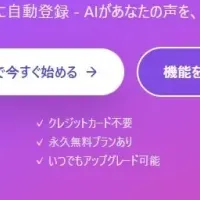
Trimble's Latest SketchUp Release Revolutionizes Design Visualization and Interoperability
Trimble's Updated SketchUp: A Breakthrough in Design Visualization
Trimble has unveiled exciting new capabilities in its latest software release for SketchUp, aiming to transform how designers work. The recent updates focus on enhancing visualization and interoperability, equipping users with tools that streamline project development and collaboration.
Enhanced Visualization Features
The enhanced visualization tools in SketchUp now allow designers to use photorealistic materials and lighting effects that can be seen in real-time. As Sandra Winstead, Senior Director of Product Management for Architecture and Design at Trimble, aptly put it, "SketchUp's 2025 release introduces a new generation of visualization." These improvements help designers create more compelling presentations, enriching their projects with a level of detail previously unattainable within the software.
For instance, the latest release introduces:
- - 360-degree HDRI or EXR images: These serve as dynamic light sources that reflect off photoreal materials, enhancing realism.
- - Photoreal Materials: Materials now more accurately depict textures and how they react to light, offering richer visual experiences for designers.
- - Ambient Occlusion: This new feature accentuates corners and edges, thereby elevating the depth perception and overall realism of designs.
Kate Hatherell, Director at The Interior Designers Hub, expressed her enthusiasm, stating that the ability to access high-quality materials within SketchUp greatly accelerates workflows and enriches client presentations.
Improved Interoperability
Beyond visualization, the interoperability features have also seen significant upgrades. SketchUp now allows for seamless transitions between its application and other industry-standard tools like Revit and IFC files. This functionality facilitates a smooth flow of data and design elements between different software ecosystems, enhancing collaboration efficiency.
Architect Lucas Grolla emphasized the value of these interoperability features, noting that they have improved the coordination between various project models. This not only streamlines workflows but also elevates the accuracy of project execution and design development.
Additionally, the release includes a refined material editor and HDRI styles that expand creative possibilities for visual representations across different design stages—from initial sketches to complete builds.
Enhanced User Experience
LayOut, commonly used for document creation from SketchUp models, has also undergone updates to ensure a more cohesive user experience in line with SketchUp’s interface. The inclusion of curated photoreal materials and configurable 3D assets in the 3D Warehouse enhances modeling efficiency, allowing designers to utilize pre-built elements that meet their project needs without extensive time investment.
Conclusion: Revolutionizing Design Workflows
The launch of this new SketchUp release, with its powerful visualization and enhanced interoperability tools, marks a significant advancement in the architectural and design fields. By simplifying complex workflows and improving collaborative efforts, Trimble is not just changing the way designers create but is also setting new standards for project management across various industries.
For those interested in experiencing these new features, Trimble offers subscriptions and free trials on their website, alongside scheduled webinars to delve deeper into these updates.
In a world where design and collaboration are increasingly interconnected, Trimble’s commitment to innovation through SketchUp promises to redefine the creative landscape, enabling professionals to deliver outstanding results efficiently and effectively.
Topics Consumer Technology)










【About Using Articles】
You can freely use the title and article content by linking to the page where the article is posted.
※ Images cannot be used.
【About Links】
Links are free to use.